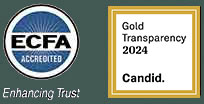“Athletes Don’t Exercise, They Train.” I read that blog title from Outside magazine. It has become one of the most helpful ideas I can think of for developing church planters and making disciples. Before I even read the article I was all in. The intentionality that athletes give to their sport is a great model for how we can make disciples and plant churches.
There are many ways we could apply the concept of training versus exercise in discipleship, but for this post let me focus on just two: 1. Christians Shouldn’t Exercise 2. Christians Should Train.
Christians Shouldn’t Exercise
My wife loves to run on a treadmill. She doesn’t have a “big” goal. She isn’t getting ready for a race. But most mornings she wakes up early to read her Bible and run. After eight years on the treadmill, she isn’t getting much faster. She isn’t running much further. She’s watching the Food Network and having fun (and staying fit). She’s doing the good work of exercise but isn’t training because she doesn’t have some big goal to reach.
Many Christians wake up nearly every morning and read their Bibles and pray and go to work and parent and lots of other things and never train. We attend services and do book studies but still don’t train. Important and godly disciplines become mere exercise, and we wonder why after “8 years” we don’t see the kind of development, growth, and Christlikeness that we desired. We are doing many of the right things but without a goal or a plan. In the local church, much of our discipleship and leadership development becomes like plodding along on the treadmill. How would your Bible time, your book studies, or your prayer time gain greater significance and produce greater growth if you had a goal? That’s what athletes do. They pick a target, make a plan, and then get to work.
Let’s apply the concept of training to developing church planters in a local church. Here are a few suggestions for how to up the intensity and intentionality of your discipleship.
Step 1: Define The Target
Have a defined (and written) description of what you are trying to develop. What are the specific characteristics, competencies, micro attributes, skills, experiences, and more, of your ideal church planting candidate? Acts 29 assesses potential church planters in light of 11 core characteristics and more than 80 micro-skills and attributes. Having that level of clarity allows you to know in detail what you are trying to develop and nurture in a potential planter. It’s like a runner picking the distance, pace and specific topography they want to run. Once you have the target defined, move to step two.
Step 2: Do An Assessment
If you start working with a physical trainer most likely one of the first things you will establish is a fitness baseline to know what level of fitness you are currently at, not just where you want to get. In my church, whenever I begin work with anyone at any level of leadership development, I assess them. These assessments can be brief or involved but whatever they are, make sure they are clear, specific, and related to the defined targets you established in step 1.
When developing planters, I leverage Acts 29’s 11 characteristics of a planter and ask specific questions related to our micro-skills and attributes. What I typically get back is a 20-40 page report that tells me much of what I need to know about where a potential planter is currently. A sort of church planter “fitness” baseline.
Step 3: Pick A Date (In Pencil)
Having a target is good, but having a target with a date is even better. World class runners don’t simply pick a distance and train, they choose an event and create a training schedule by working backwards from the date. When does a particular planter want to be ready to go? When are you going to plant a church out of your church? What benchmarks can you set and when will they be achieved? Pick dates prayerfully and practically but do it in pencil, knowing things can change.
Step 4: Make A Customized Plan
Because everyone needs something different, make sure that whatever training plan you put in place for emerging planters focuses on their growth areas while building on their strengths. You do this by comparing the defined target (step 1) to the individual’s assessment (step 2) and reverse engineering from the selected date (step 3). Where are the big gaps? What needs the most focus right now? Make a plan that targets these areas.
In our church, we use what’s called a Personal Discipleship Plan. It is a simple template that allows emerging leaders to craft clear, measurable, timed, practical goals around the core competencies, micro-skills, and attributes of a church planter.
Christians Should Train
Christians train, meaning they get to work and do something. Having clear targets, assessments, dates, and training plans will produce nothing if we don’t get to work. And getting to work includes you the trainer and also the emerging church planter.
When it comes to making disciples that can plant churches, exercise isn’t enough. Let’s stop exercising, and start training.










